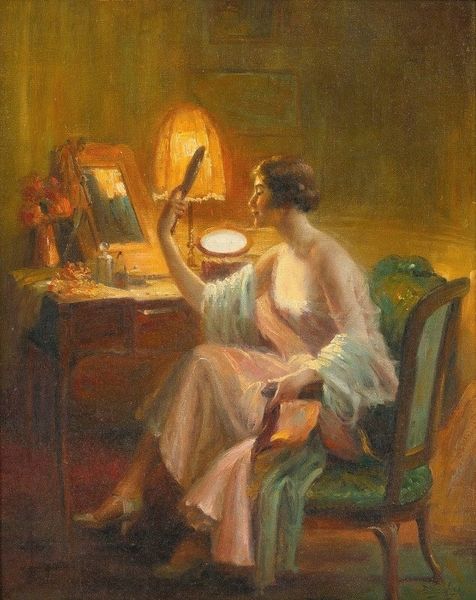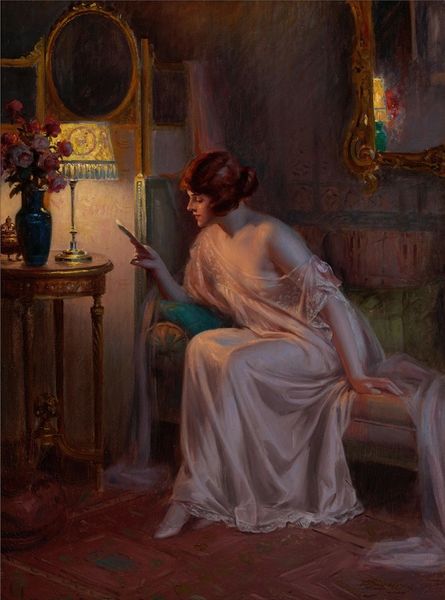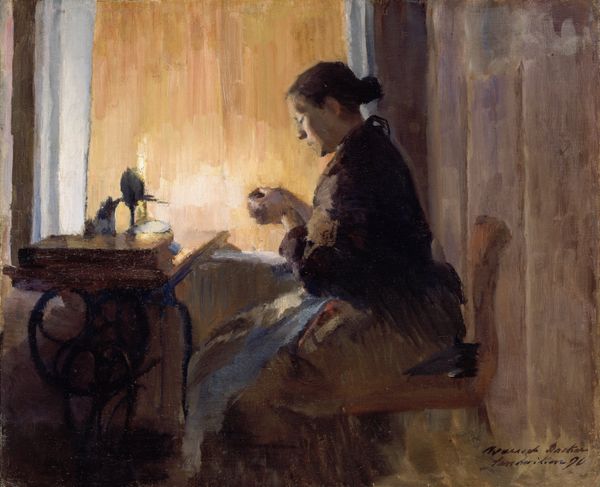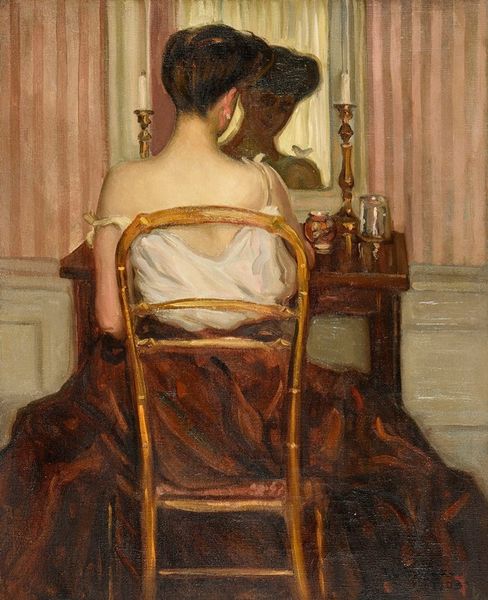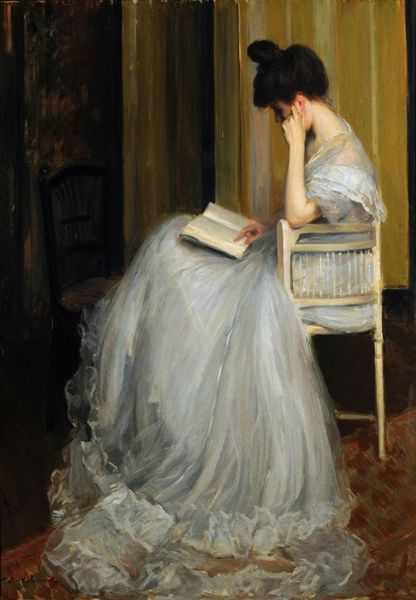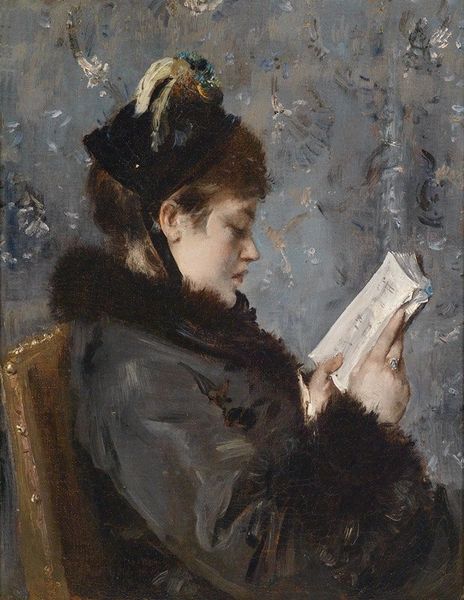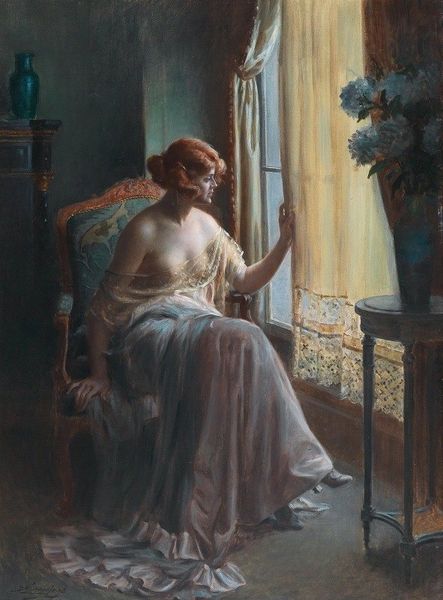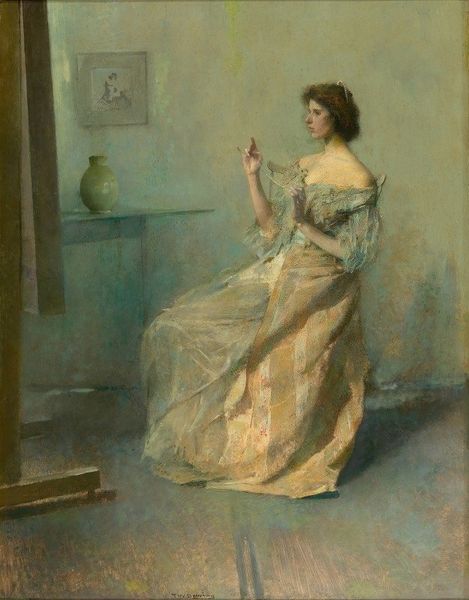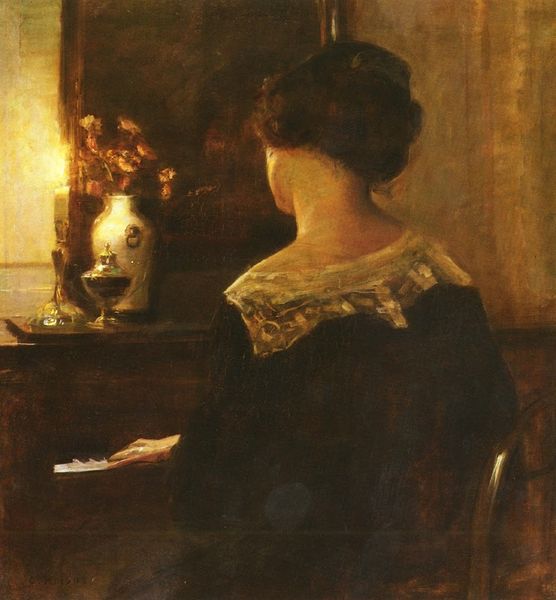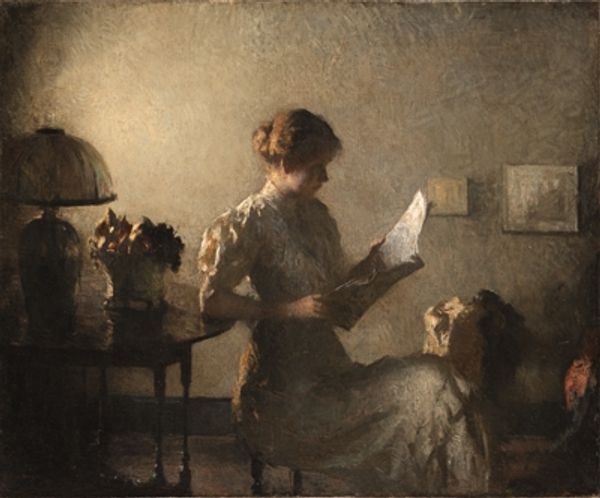
drawing, pastel
#
portrait
#
drawing
#
figurative
#
oil painting
#
portrait reference
#
intimism
#
portrait drawing
#
pastel
#
portrait art
Copyright: Public Domain: Artvee
Editor: So, this is "Le Roman" by Delphin Enjolras, made with pastel. There’s such a gentle, intimate mood about it. What do you see in this piece? Curator: What immediately strikes me is how Enjolras positions this woman within the context of leisure and private space, something that was historically coded with class and gender. We see her absorbed in her book, illuminated by lamplight. How might her posture, partially undressed, complicate or reinforce our understanding of female representation at the time? Editor: I guess it makes her seem both vulnerable and powerful, since she is owning her space? Curator: Precisely. It's crucial to consider this in relation to the male gaze, which historically objectified women in art. Is Enjolras subverting this gaze, or is he perpetuating it? The pastel medium, with its soft and delicate quality, is important too. How does the choice of this medium contribute to the overall atmosphere and the message conveyed about femininity? Editor: That’s interesting. I hadn’t thought about how the material itself might be playing into those ideas. It feels like the medium invites you in instead of pushing you away. Curator: Exactly. We need to question how the setting and her intimate state relate to broader societal expectations of women, literacy, and leisure in that historical moment. Do you think there is any symbolism or underlying narratives in her clothing? Editor: It seems a bit ambiguous, but the draping might show vulnerability in the sense that they seem very loosely worn. It seems contradictory. Curator: By examining art through these kinds of intersecting lenses, we uncover narratives about power, gender, and representation that might not be immediately apparent. Editor: I hadn't considered that an everyday scene of a woman reading a book could have such a strong voice! It really reframes how I see art.
Comments
No comments
Be the first to comment and join the conversation on the ultimate creative platform.

